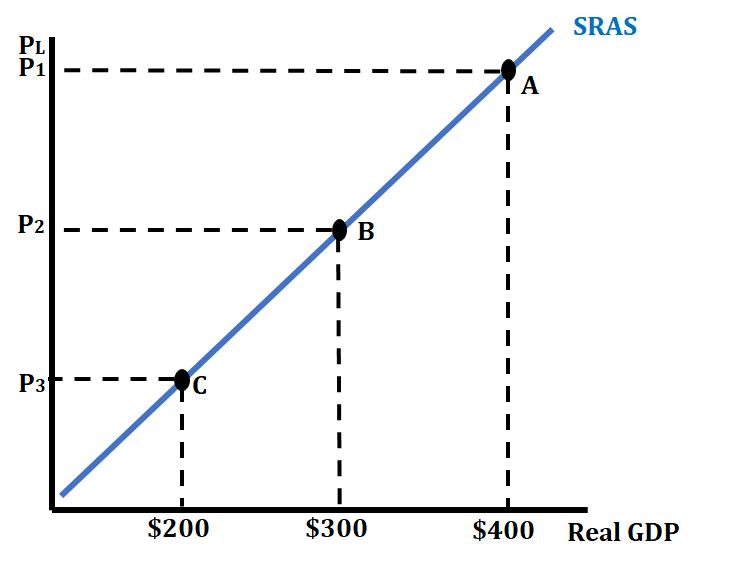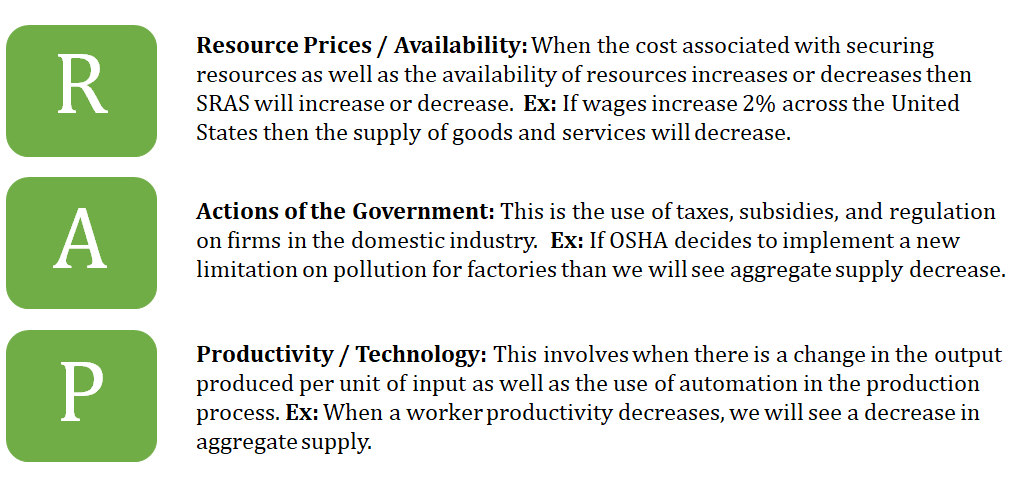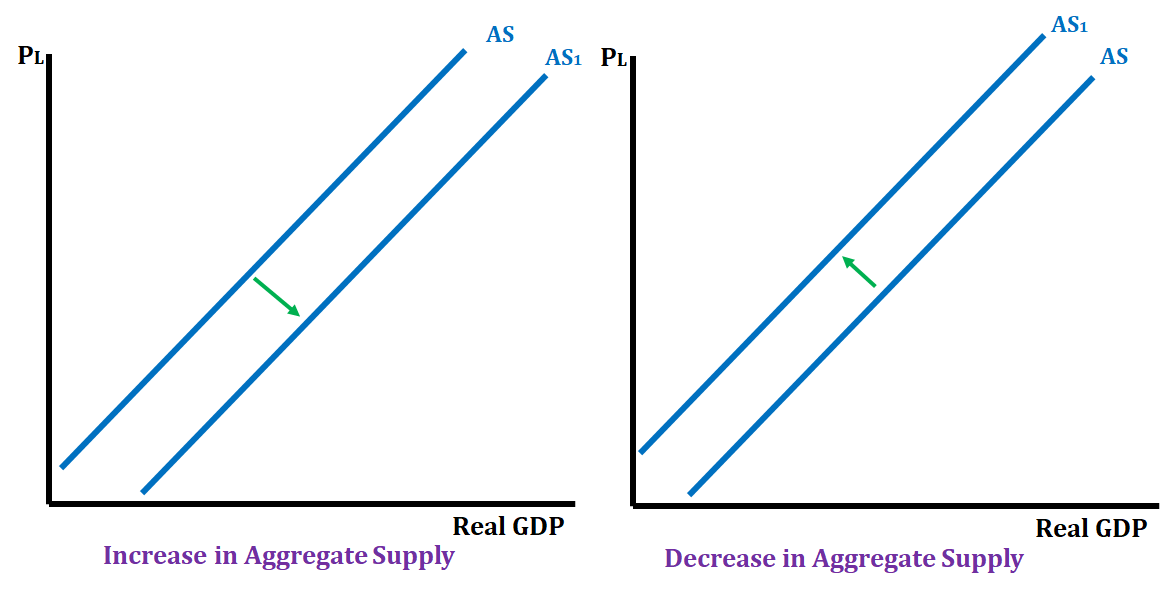J
Jeanne Stansak
Haseung Jun
AP Macroeconomics 💶
99 resourcesSee Units
Short-Run Aggregate Supply (SRAS)
So what do we remember about aggregate supply? It's the relationships between price level of all stuff made within the country borders and the amount of stuff made. But we also have something called short-run AS and long-run AS.
Short Run Aggregate Supply represents all the goods and services that firms are willing and able to produce at various price levels. The law surrounding SRAS is very similar to the law of supply of individual goods and services. The relationships that exist between the price level and real GDP output that is supplied is positive. This means that, as the price level rises, firms are willing or able to produce a greater quantity of real GDP output. As the price level falls, firms are only willing or able to produce a lesser quantity of real GDP output.
When prices decrease, the aggregate real GDP output supplied decreases.
The short-run aggregate supply is upward sloping because wages and resource prices are not flexible (sticky) in the short-run. Below is a sample graph of the short-run aggregate supply curve. As you can see, when the price level drops from P1 to P2, the real GDP falls from $400 to $300. Also, when the price level rises from P3 to P2, the real GDP rises from $200 to $300.
Just like with supply for an individual good or service, a change in price level moves us along the aggregate supply curve.

Shifters of Short Run Aggregate Supply
Just like with the supply of individual goods and services, there are factors (shifters) that will either increase or decrease the amount of aggregate supply within a country. These factors include resource prices and availability, actions of the government, and productivity and technology. We use the acronym RAP to help us remember these factors.

Each of the above factors can either cause an increase in aggregate supply (shift to the right) or a decrease in aggregate supply (shift to the left).

SRAS curve shows a relationship with an increase in price level and an increase in output. Anything associated with price will be a shift along the SRAS curve, while any other RAP factors affecting SRAS will shift it right or left.
Keep in mind, in order for the SRAS to show the correct relationship, employment should also rise. If employment is held constant while prices rise, unemployment will decrease. So we know SRAS will show a short-run trade-off between inflation and unemployment.
Scenarios
Let's look at a few scenarios and determine whether it causes an increase in aggregate supply or a decrease in aggregate supply. Click on the arrow next to each scenario to see the correct answer and explanation.
- The Canadian Prime Minister places new regulations on carbon emissions.
- This would cause a decrease in aggregate supply because it is a regulation of the government that increases the cost of production for suppliers which will decrease aggregate supply.
- An increase in consumer income causes the GDP deflator to rise to 110.
- The GDP deflator, if you remember from Unit 2, is an indication of the inflation rate. Since this has risen, inflation has increased which is an indicator that price levels have increased. When price levels increase, there is a decrease in the amount of real GDP that is supplied. This is a movement along the aggregate supply curve instead of a shift of the curve.
- Automation in the workplace doubles productivity for all firms in Japan.
- This will cause an increase in aggregate supply because new technology has led to firms being more productive at all price levels.
- A war with Great Britain destroys Spanish coal refineries.
- This will cause a decrease in aggregate supply. This falls in the factor of resource availability. Since coal refineries have been destroyed there is less coal available to use in the production process. With less coal available we will see a decrease in aggregate supply.
Browse Study Guides By Unit
💸Unit 1 – Basic Economic Concepts
📈Unit 2 – Economic Indicators & the Business Cycle
💲Unit 3 – National Income & Price Determination
💰Unit 4 – Financial Sector
⚖️Unit 5 – Long-Run Consequences of Stabilization Policies
🏗Unit 6 – Open Economy - International Trade & Finance
🤔Exam Skills
📚Study Tools

Fiveable
Resources
© 2025 Fiveable Inc. All rights reserved.